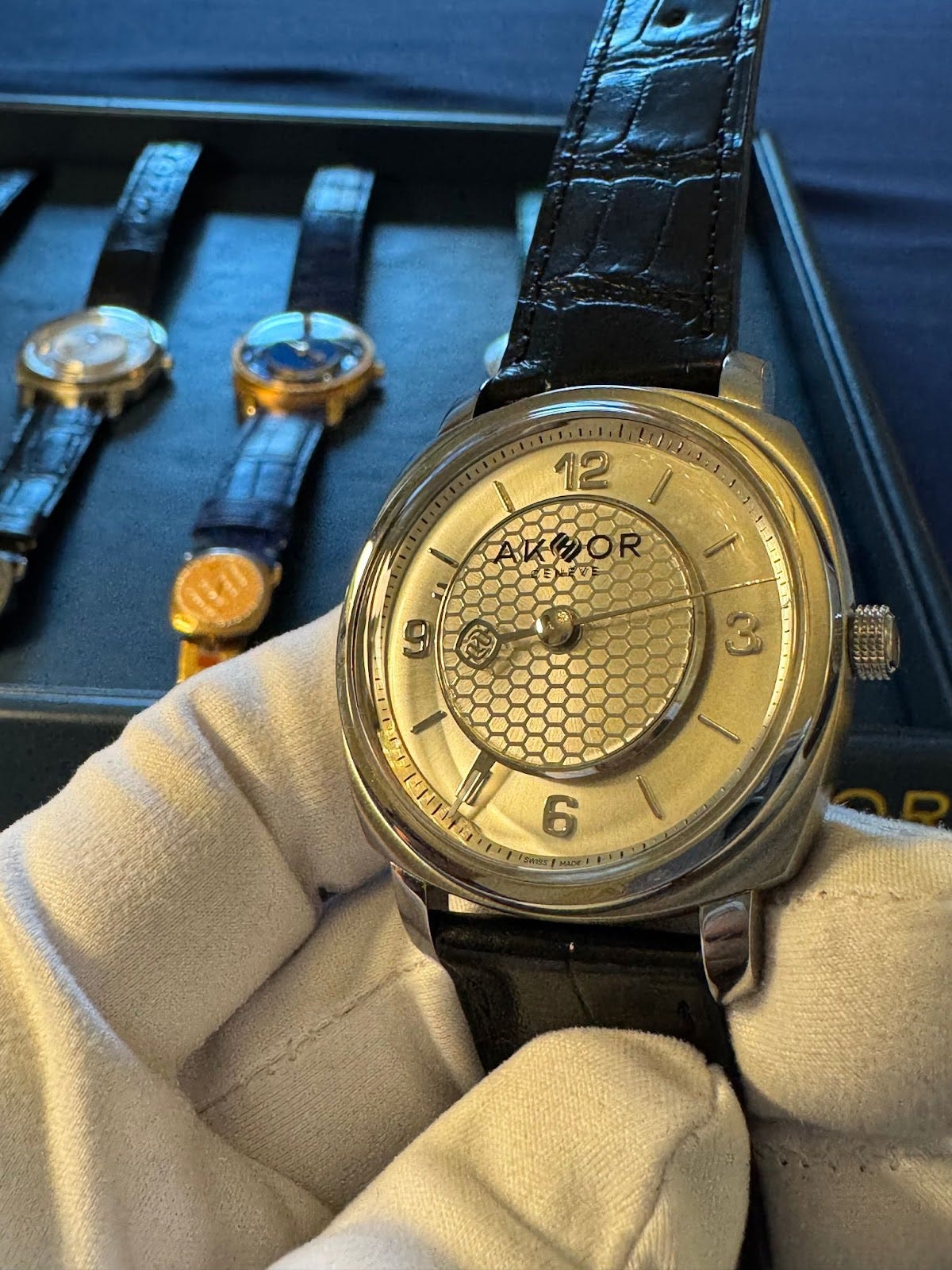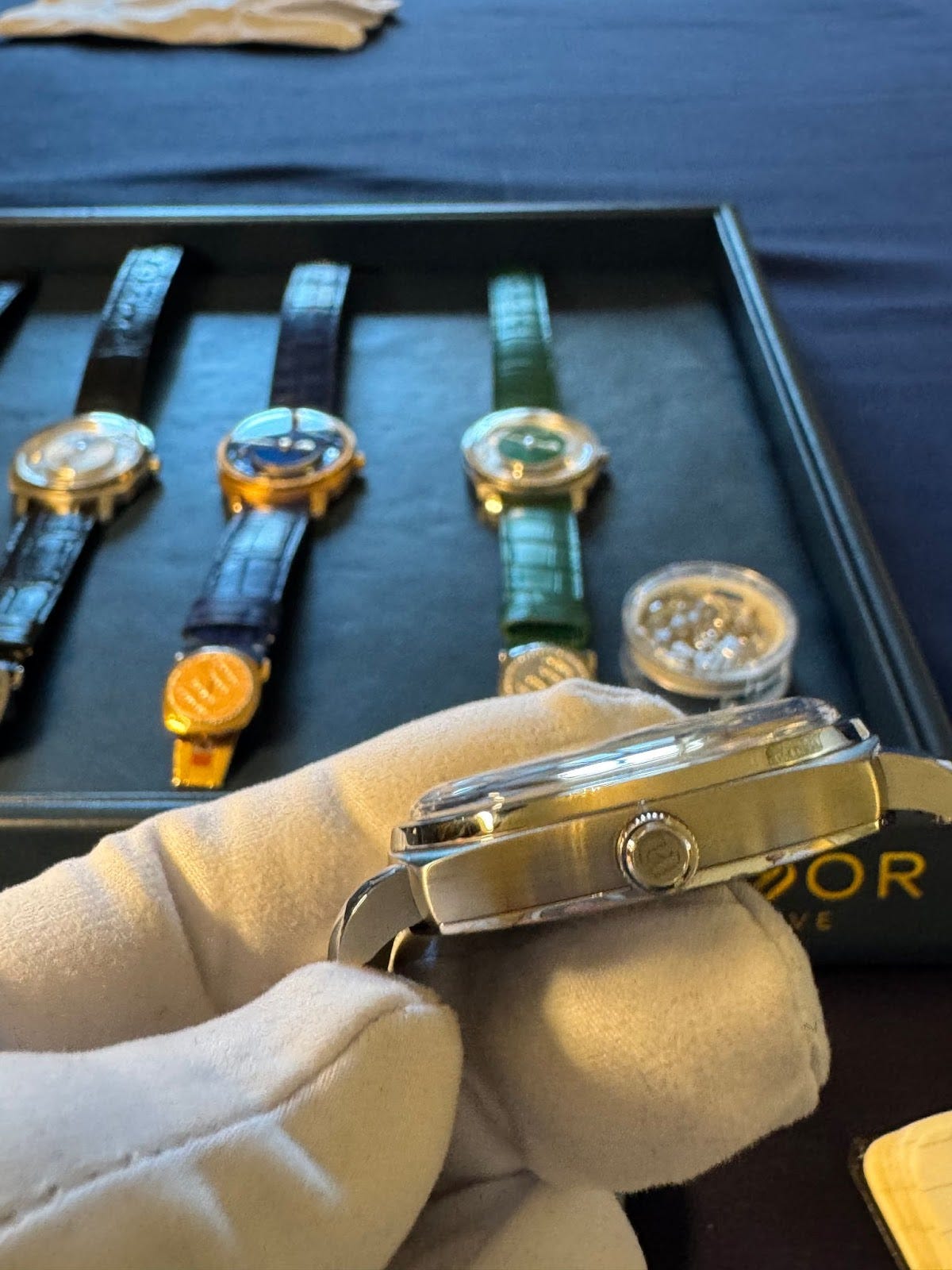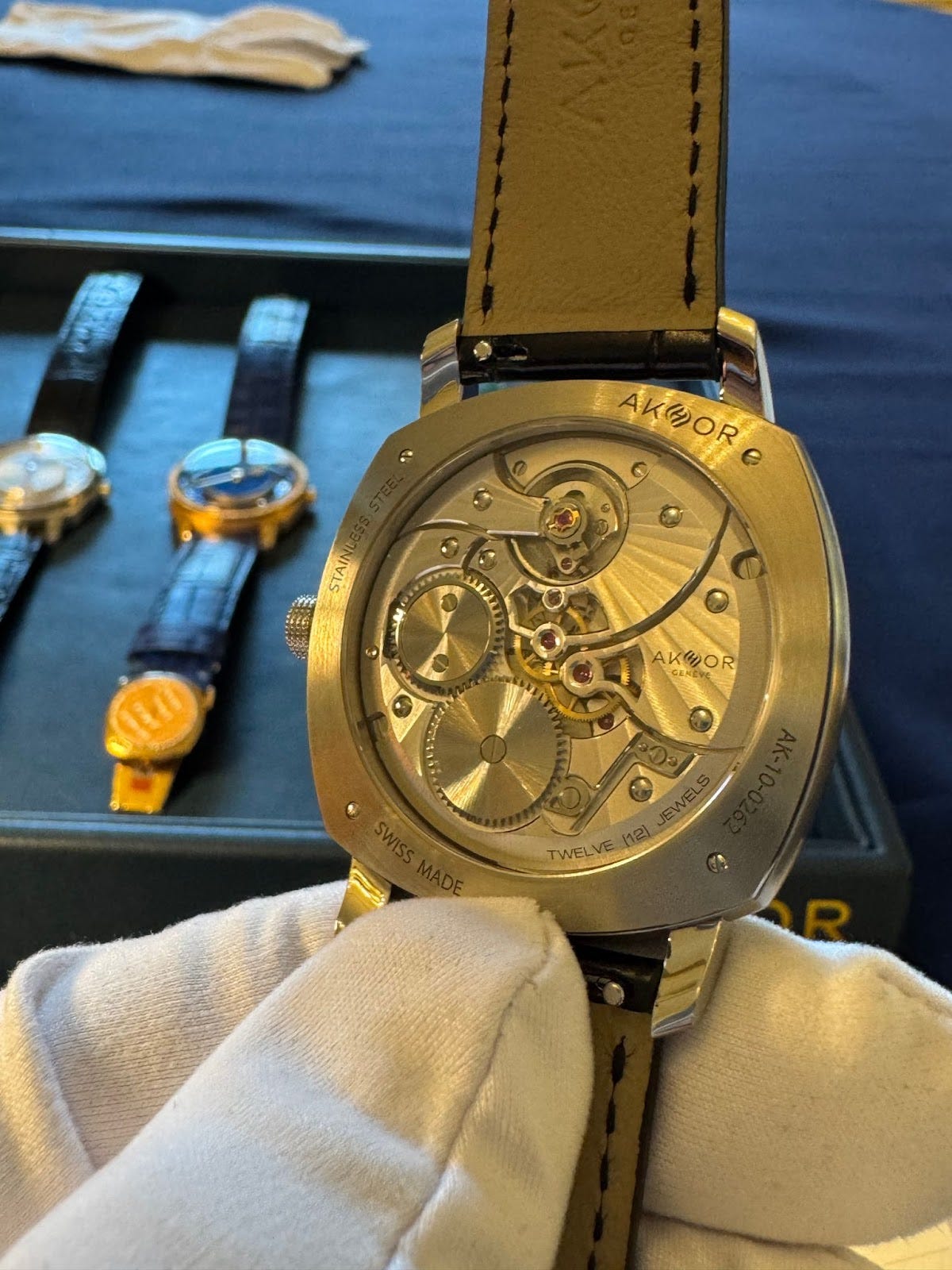Akhor Balances Time in Mid-Air
A new Geneva house, Akhor, presents its first collection: time suspended, precision disguised as levitation. It is an opening act poised between invention and tradition.
Every debut from a new watch brand begins with a contradiction. Akhor is no exception. On one hand, it arrives in Geneva claiming gravitas—its own manufacture movement, a patented architecture, a suspended dial. On the other hand, it is untested, a newcomer demanding attention in a market already saturated with “independent visions.” The paradox is that Akhor insists it is both timeless and new, both measured and audacious. In watchmaking, contradiction is currency: Panerai sold tool watches as luxury objects, Nomos built Bauhaus minimalism into a global export. Akhor’s claim—floating time anchored by invisible engineering—plays the same double game, simultaneously grounded and ethereal.
The justification comes quickly: in-house. The AK10 calibre, they say, exists solely for this suspended dial architecture. Collectors have heard this justification so many times that it risks becoming a parody. In-house once meant independence, now it too often signals marketing theater. But to dismiss Akhor’s claim would be unfair. The calibre is slender at 3.9 mm, with hand-bevels, Geneva stripes, a stop-seconds mechanism. The work is real. Outsourcing would have been cheaper and faster. Here, Akhor uses the justification not as a shield but as a statement of intent: if they begin with a tailored calibre, they intend to stay. Skepticism bends, if not quite breaks.
Every watch lives or dies in the rituals it enables. Akhor has chosen one of the most fragile: the illusion of levitation. To wind such a watch is to touch the contradiction itself. The cushion case is solid, Geneva in its seriousness; the dial floats, fragile as a mirage. The hands orbit a void. In a market where most collectors obsess over thickness or heritage, Akhor asks them to dwell on sensation: the act of gazing at time as suspension. One thinks of Corum’s Golden Bridge, of Cartier’s mystery clocks, of independent makers who flirted with invisibility. The ritual is less about winding or setting, more about believing that time can be untethered and still precise.
Marketing, predictably, invokes balance and origins. “Le Temps en Équilibre”—time in equilibrium—suggests a moral weight, as if ownership brings one closer to philosophical truth. Reality will be less exalted. These watches will not accompany mountaineers or scientists. They will rest in drawers, emerge for dinners, and circulate in Geneva salons. Yet that is not a weakness. Luxury always exaggerates. Rolex Submariners seldom meet the sea; Audemars Piguet Royal Oaks seldom endure factories. Akhor’s floating dial will rarely encounter turbulence, but it will serve its true function: a conversation piece, a silent assertion that one has chosen differently. The gap between claim and reality is precisely what makes the watch compelling.
Every new brand must tether myths to craft. Akhor leans on etymology—“Akh” as immortal force of the soul, “or” as nobility of material. Such stories are fragile if not supported. But Akhor has built scaffolding: the calibre, the patented dial, the finishing. Its founders—Anissa Bader, Laurent Davoli, Daniel Martinez—bring résumés across science, design, and horology. Myth becomes credible when linked to fingerprints. The dual-disc dial architecture, invisible and functional, is proof enough. Collectors who sniff at invented heritage will pause when they see the bevels, the counterweight seconds hand, the precision of the suspension. A new house, but not without roots.
Function, as ever, conceals psychology. Officially, the AK10 delivers chronometric accuracy, 60 hours of reserve, a robust 4 Hz balance. Unofficially, it offers reassurance. To own Akhor’s debut is to imagine oneself ahead of the curve, the kind of collector who spotted the promise of F.P. Journe in 1999 or De Bethune in 2002. Winding the AK10 becomes less about energy and more about staking identity: one is patient, discerning, willing to risk belief in the untested. The psychological need is not for timekeeping, but for narrative. This is how watches seduce—by offering collectors a story in which they cast themselves as protagonists.
The theater of precision always risks tipping into comedy. What could be more disproportionate than a patented suspension system devised so that hours and minutes may appear to float for a banker in Zurich? And yet this is the poetry of watchmaking: seriousness devoted to triviality, labor lavished on illusion. Collectors know this and relish it. They debate balance frequencies and jewel counts at cocktail bars. They treat movements as metaphors. Akhor’s levitating dial enters this theater knowingly. Its seriousness is real; its application, faintly fanciful. That tension is not weakness but magnetism. Watches thrive when they balance solemn craft with human vanity.
Placed in today’s landscape, Akhor’s timing is bold. Rolex tightens supply, Swatch Group consolidates, Richemont harvests heritage. Independents split: some pursue maximalism (MB&F’s kinetic sculptures, Jacob & Co.’s extravagance), others minimal purity (H. Moser, Ming). Akhor positions itself in between: visible innovation, but discreet form. At 39 mm, cushion-shaped, it references 1960s elegance without irony. The floating dial is its sole provocation. In an age when brands revive archives or chase celebrity ambassadors, Akhor offers something rarer: a structural idea. The risk is obvious—collectors may dismiss it as gimmick—but the upside is clarity. At launch, Akhor already has an identity.
Author’s Opinion
So what verdict? A skeptic will note the fragility of a single collection, the uncertainty of longevity, the dangers of over-promising. An insider will admit the work is unusually coherent for a debut, the execution precise, the restraint admirable. A poet will linger on the sight of hands orbiting emptiness. And a collector, tempted by the memory of past independents who became legends, may well decide this is worth believing in. The aphorism might be: illusion is the most durable form of truth in watchmaking. Akhor begins by making the illusion visible, and that is a strong start.





